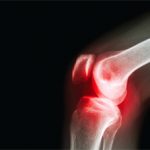The proportion of days affected by each weather condition was analyzed, as well as median minutes of moderate or vigorous activity. The proportion of days in each weather state when participants had zero minutes of any higher-intensity activity were also considered. The authors noted that the results “demonstrate a significant effect of cold weather, rain, and daylight hours on objectively measured activity.”
The study found associations between hot days and heavy rain days with somewhat greater high-intensity activity, but overall lower physical activity levels. For example, on heavy rain days, participants with tailored exercise counseling programs had about one hour less of any physical activity.
“Weather-related restrictions on physical activity are unevenly distributed among participants and may have a differential impact on higher-intensity, sustained bouts of activity,” according to the authors. This was probably because walking significant distances usually occurs outdoors, they note.
What Rheumatologists Can Do
“When we interview our patients, we need to discuss what opportunities they have to find a space for physical activity in the winter,” says Dr. Feinglass. “There has to be some consideration for community resources available for people to walk in an extended way for more than 15 or 20 minutes indoors. Sometimes there are indoor facilities, but most of the time, there is not. This led to our conclusion that there is almost an exercise desert in many of our cities, where people don’t have a physical location to walk safely in the winter months. This is a public policy problem, as well as a clinician’s problem.”
The study authors commented that, “to decide to be active on a dreary day takes commitment and self-discipline.” They suggested that people in apartments or high rises can walk in the halls or safe, well-lit stairwells. Other options include television exercise programs, exercise tapes, and strength-training bands. Additionally, mall walking at large indoor shopping centers is an option.
“Regrettably, many people with arthritis are less likely to get out and exercise,” notes Dr. Matteson. All the more reason for rheumatologists to stress the importance of physical activity to their patients, he says. “You can compensate for some of the bad effects of bad weather on your well-being by getting out there and exercising. That’s the key message.”
Sue Pondrom is a medical journalist based in San Diego.
Reference
1. Feinglass J, Jungwha L, Semanik P, Song J, Dunlop D, Chang R. The effects of daily weather on accelerometer-measured physical activity. J Phys Act Health. 2011;8:934-943.


